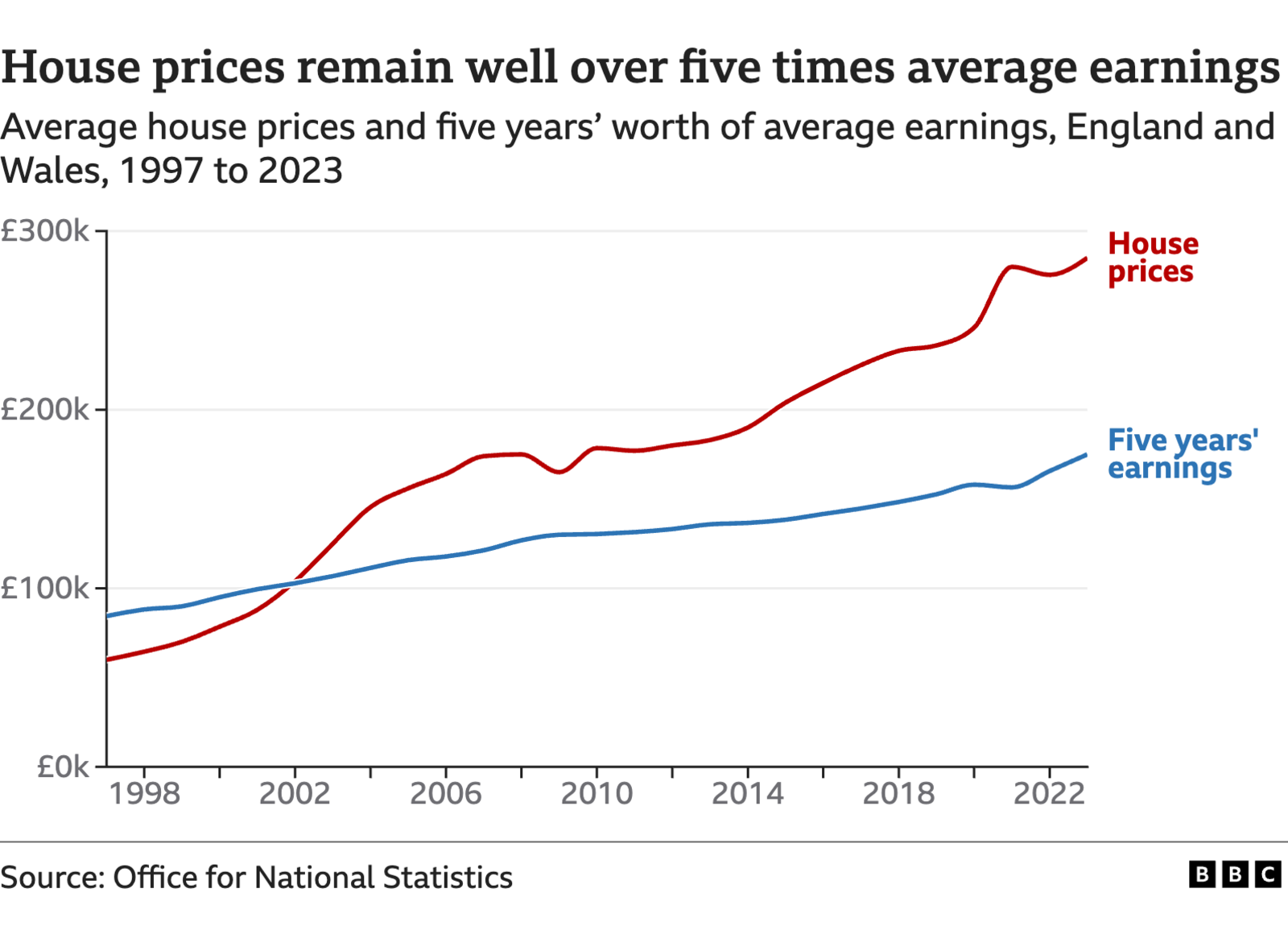New homes: What's the new government's housebuilding target?
- Published
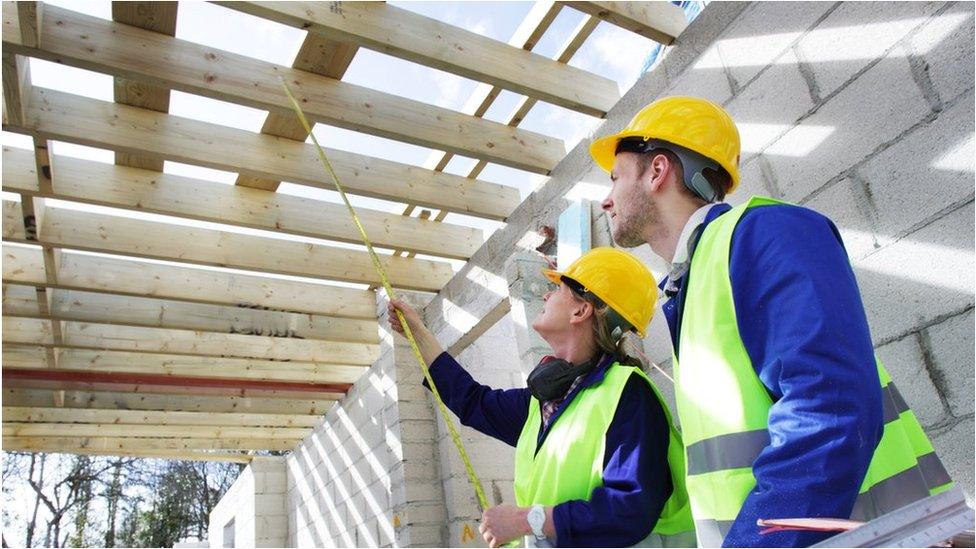
The government aims to build 1.5 million more homes in the next five years, helped by planning reforms, the release of green belt land and the reintroduction of mandatory housing targets for local authorities.
Under the motto "get Britain building again", the new Labour government has started laying out its plans for how it will deliver more housing.
What is the government's housebuilding target?
The target, set out in the 2024 Labour manifesto, is for "1.5 million new homes over the next parliament".
The figure, which is for England, was unveiled by now Prime Minister Keir Starmer at his party conference in October 2023.
"We'll get shovels in the ground, cranes in the sky and build the next generation of Labour new towns," he said.
In the manifesto, Labour also pledged to update the National Policy Planning Framework, restore mandatory housing targets, and deliver the biggest increase in social and affordable housebuilding in a generation.
To achieve these, they'll prioritise building on previously-developed brownfield land first but, where necessary, also release currently-protected green belt land of lower quality.
How close did the previous government come to meeting its targets?
The previous Conservative government had two housebuilding targets - 300,000 new homes a year and one million new homes over the whole Parliament.
Figures for housebuilding in 2023-24 are yet to be released but annual figures, external for 2021-22 and 2022-23 were just short of 235,000 each year.
This is in terms of "net additional dwellings" - a housebuilding measure that includes newbuild housing and properties converted for domestic use, while subtracting demolished homes.
In 2019-20 that reached a peak of 248,590 but has fallen since, partly due to the pandemic.
Labour say that the fall was also due to the scrapping of the mandatory housebuilding targets for local authorities in December 2022, so they reintroduced those in their first month in office.
The government has confirmed to BBC Verify that its target is also in terms of net additional dwellings - not housing starts - although Housing Minister Matthew Pennycook had contradicted this on 31 July.
"We said we'd start 1.5 million new homes over the course of the parliament, over that 5 years. That's the target that you should measure us on," he told Sky News.
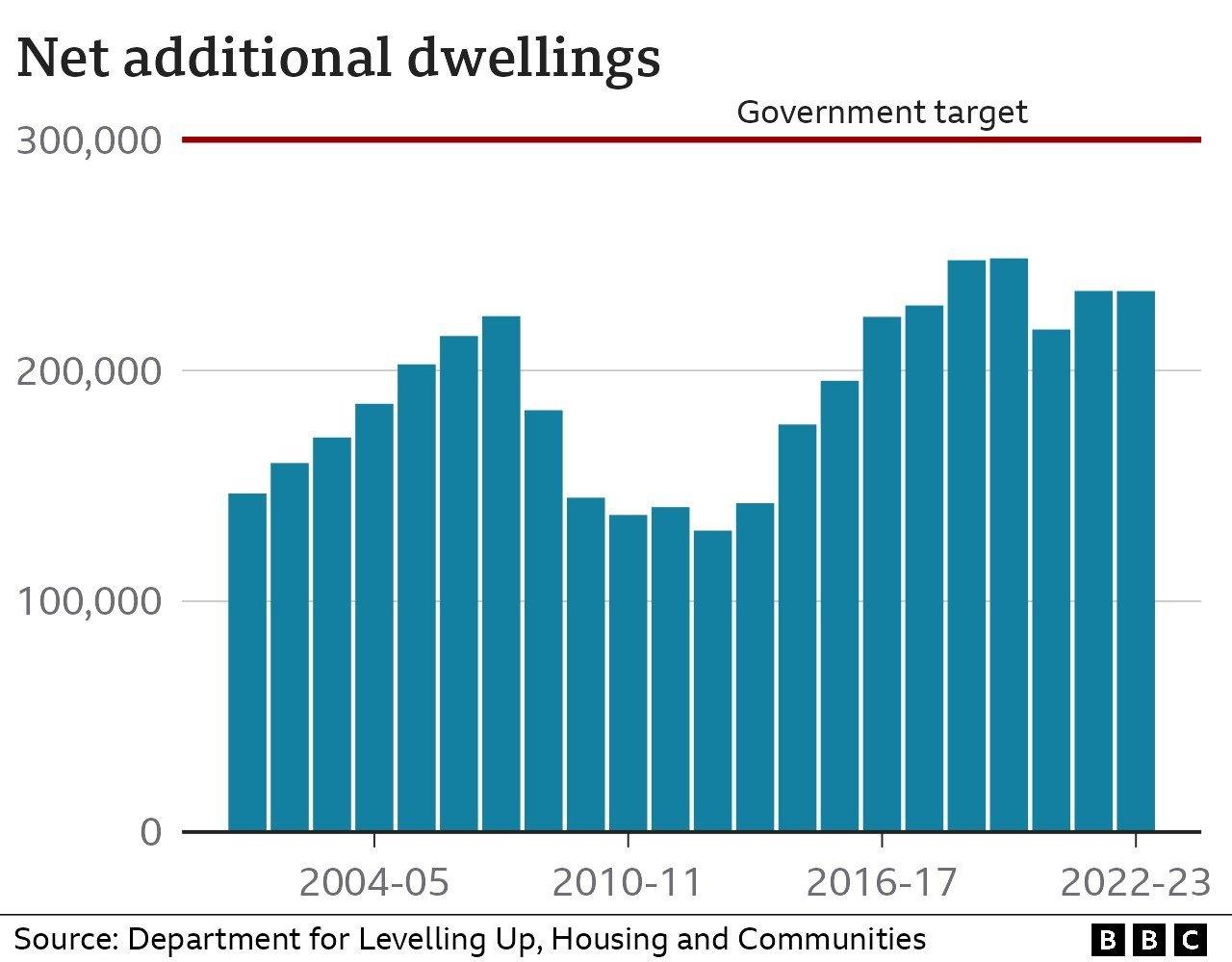
In terms of the last government's target of building one million homes over the course of the Parliament, at the end of May they published a report, external confirming that the target had been met.
How many homes were being built previously?
The new government's 1.5 million homes target suggests that there will be an average of 300,000 net new homes each year - something that hasn't happened in the past.
In the 1960s, external, while there were more than 300,000 newly-built homes each year, there were also a lot of demolitions, largely due to slum clearances, which meant that net gains were at a similar level as now.
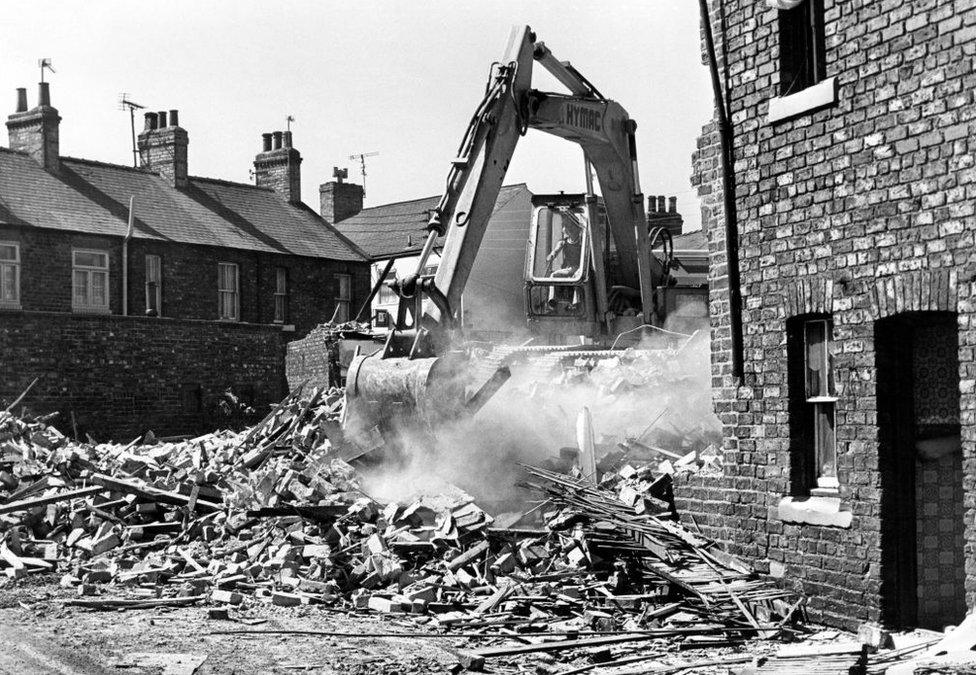
Former miners' cottages being demolished in Carlin How in North Yorkshire in June 1978
Net housing supply decreased in the following decades, external and hit a record low of just over 150,000 in the 1990s.
The annual figure then rose until the 2007-08 financial crisis, when housebuilding stalled, before recovering in the mid-2010s.
What is the government doing to boost housing affordability?
Housing charity Shelter has warned that the new government risks not meeting its target and not addressing the actual housing challenges unless it puts affordability at the heart of its building approach.
"Any new planning legislation must be focussed on delivering 90,000 social rent homes a year. Private developers will not deliver the target 1.5m homes by themselves - councils need the means to build genuinely affordable homes too," it said.
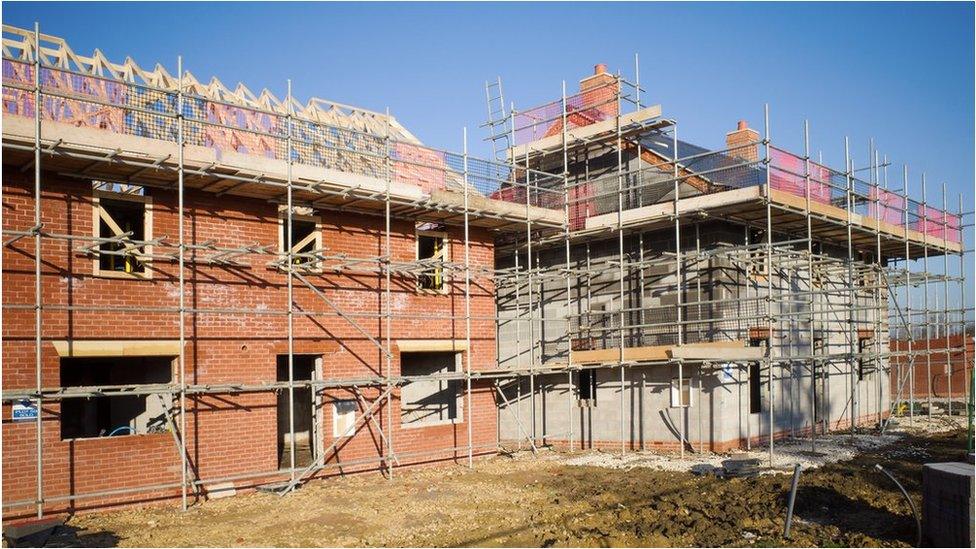
Labour have expressed their commitment to social and affordable housebuilding.
If they are to deliver the biggest increase in that in a generation, they need to build over 66,100 affordable homes each year, at least 51,500 of these for social rent, which was achieved by, external the John Major 1992-97 Conservative government.
One of the ways Labour plans to do that is by introducing golden rules for the way it releases low-quality green belt land.
Any new development on such land will need to have at least 50% affordable homes - significantly more than the 10% requirement for new developments on brownfield land.
Latest figures on affordable-housing supply, external show 63,605 affordable homes were completed in England in 2022-23, an increase of 7% from the previous year.
These homes are classified as having:
affordable rent - properties rented by local authorities or other providers at up to 80% of local market rent
London affordable rent - a separate classification, offered by the Greater London Authority, also capped at 80%
social rent - affordable housing usually owned by local authorities and housing associations with rents set by a national rent formula
intermediate rent - rent capped at 80% for key workers, sometimes as part of a scheme to help save up to buy a home
shared ownership - purchaser buys between 25% and 75% of a home and pays rent on the remaining share
affordable home ownership - homes offered at no more than 80% of local market values
Just 9,500 of the affordable housing built that year, however, was for social rent, though there were over 24,500 new properties for affordable rent.
How much have house prices risen?
For a home to be deemed affordable, it needs to cost less than five times workers' earnings.
Across England & Wales, on average, that hasn't been the case since 2002.
Homes in 2023, external cost £285,000 on average - more than eight times average earnings of £35,000.
This is a slight improvement in affordability from the year prior, though, as earnings have been growing faster than house prices.
